
+
Many audio projects should be approached with a bit of caution; It is usually illegal to record someone without their knowledge. Incidental recordings aren't usually a problem but intentional 'bugging' is a no-no. Simply listening when the subject has no 'reasonable expectation' of privacy is usually fine, but not necessarily, so be careful.

With the possible exception of sophisticated shotgun microphones or microphone arrays, effective directional microphones usually employ parabolic reflectors or horns. Parabolic reflectors about the size of a modern satellite receiver antenna, perhaps 2 feet across, perform quite well but are a bit obtrusive. These are commonly seen on the sidelines at football games. But it turns out that simple horns or cones work very well as directional sound collectors, are easier to handle, and don't look like microphones. They do look a bit like megaphones, witches' hats, or traffic cones, all of which might make great microphones! In fact, a pair of cheerleader megaphones might make a great two-way communications system. To convince yourself of the effectiveness of such a simple sound collector, throw together a cone like the one to the left, shown next to an ordinary spray paint can for size reference. The cone is constructed from 22” by 28” poster board wrapped to form a skinny cone about 25” long and 7” diameter. The small end is only about 1/2” diameter. The paper is held in position with some quick-setting spray adhesive and the extra paper is cut off the large end to square up the opening.
Simply hold the small end up to your ear and point the cone at a sound source. Move the cone back and forth to observe the excellent directivity. The thin paper lets sound in through the sides but the enhanced hearing provided by the simple cone is significant.
An electret microphone may be mounted in the small end of the cone and the whole cone can be slipped into a long cardboard box to act as a disguise and to help block sound from the sides and rear:

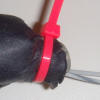
That doesn't look much like a microphone! A simple battery-powered FM transmitter or baby monitor makes the microphone wireless.
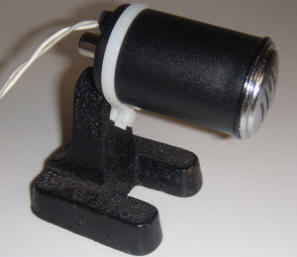
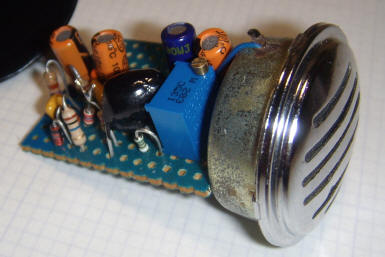
Dynamic microphones have a fantastic dynamic range, easily handling whispers to rock concerts. The signal level range coming out of a dynamic microphone can be huge and an AGC amplifier can prove quite handy. This project employs an old hobby dynamic microphone mounted in a film canister with the AGC amplifier tucked inside. The LED/photocell is an ordinary LED glued to the top of a small CdS cell from a night light, covered with black 'liquid tape'. The top of the LED was sanded flat to make it easier to glue to the flat cell face. The pair is visible to the left of the output level potentiometer, above the op-amp.
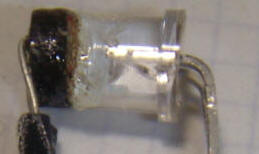
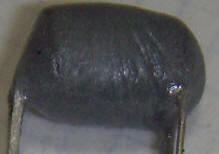
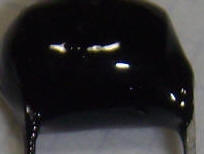
The AGC range is over 60 dB and the maximum gain is set by the 22 megohm across the photocell. Combined with the dynamic range of the sound recorder, the total range will extend from a whisper to a roar. The resistor in series with the LED sets the sensitivity of the AGC and that value may be increased if the loop is unstable, especially if the LED is a high-intensity type.
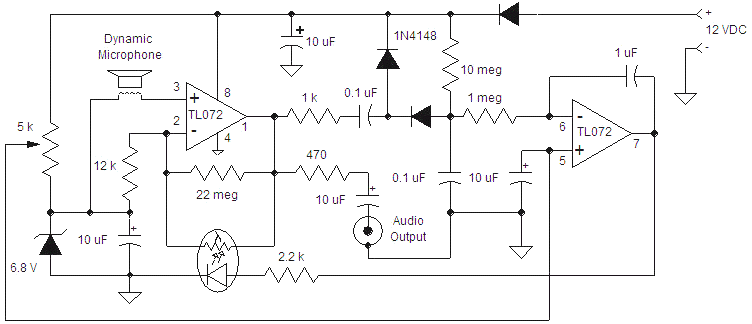
The loop is very slow and the performance is fantastic. This microphone should allow for adjustment-free recording or listening without overloading, even next to a jet! Many other types of microphones will simply start clipping. The prototype is mounted on a stand for general laboratory experimentation.